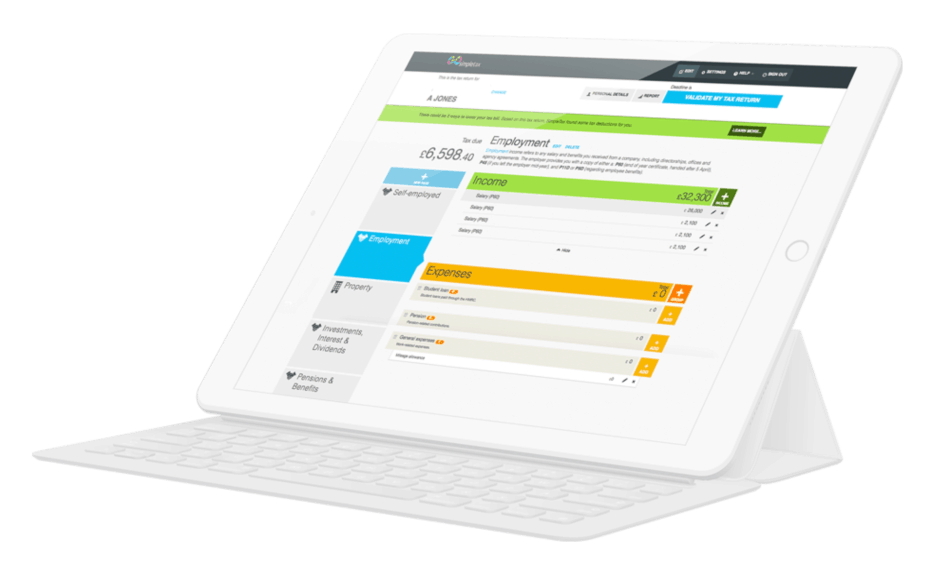What is the trading allowance and should you claim it?
The trading allowance (also called the trading income allowance) is a tax exemption that can be worth up to £1,000 a year. It can benefit sole traders (ie self-employed people), as well as those who make…
5 Minute Read
Last Updated: 23rd March 2023
The trading allowance (also called the trading income allowance) is a tax exemption that can be worth up to £1,000 a year.
It can benefit sole traders (ie self-employed people), as well as those who make a small amount of income from, for example, casual repair or maintenance work here and there, occasional paid gardening work, babysitting, tutoring, etc, or hiring out equipment or tools, etc.
If you earn less than £1,000, from one or more trades, it can be tax-exempt thanks to the trading allowance. And you may not need to report these low earnings to HMRC. However, the trading allowance may not be used or apply in some cases, and if you do use it, it might mean you cannot use other allowances.
Need to know!
- Even if you don’t need to report casual or occasional income to HMRC because it is less than £1,000 a year, you should still maintain records of this income (ie dates, sums received, services supplied, etc), just in case HMRC asks.
When can’t you use the trading allowance?
You cannot apply the trading allowance if the trading income comes from:
- an ordinary business partnership
- a company that you or a family member owns or controls
- your employer or your spouse/civil partner’s employer.
Need to know!
- You must register for Self Assessment if you have gross trading income of more than £1,000 in the previous tax year or other income worth more than £2,500. If you have other gross income of between £1,000 and £2,500, you should contact HMRC.
Trading allowance: what if you’re self-employed?
If you start a sole-trader business (ie you decide to go freelance or self-employed) and don’t earn more than £1,000 of gross income in that tax year, you needn’t register for Self Assessment.
If your gross income for a tax year (which ends on 5 April) is more than £1,000, you must register for Self Assessment by the following 5 October (although HMRC recommends that you do it as soon as possible).
You must register for Self Assessment and report your income via a tax return (SA100) when you:
- have made a loss and want to claim relief via a tax return
- want to pay voluntary Class 2 NICs (National Insurance contributions) so that you qualify for some state benefits
- want to claim Tax Free Childcare for childcare costs based on your self-employed income
- want to claim Maternity Allowance, based on your self-employment.
You can still use the trading allowance, as long as you complete a Self Assessment tax return. If you’re already registered for Self Assessment, you can deduct the trading allowance from your gross trading income on your tax return.
What about claiming other expenses?
You cannot deduct any other expenses or allowances if you claim the trading allowance. That means you cannot claim allowable expenses, which are business costs HMRC otherwise allows you to deduct from your income before you are taxed. Claiming allowable expenses reduces your taxable income.
Claiming the trading allowance also prevents you from claiming capital allowances. In many instances, claiming trading allowance may not be the right option, especially if there are other allowances and expenses you could claim. Contact HMRC or seek professional guidance if necessary.
Blog content is for information purposes and over time may become outdated, although we do strive to keep it current. It's written to help you understand your Tax's and is not to be relied upon as professional accounting, tax and legal advice due to differences in everyone's circumstances. For additional help please contact our support team or HMRC.
How to keep track of your side hustle income and expenses
16 Apr 2024
12 things business partners should know about Self Assessment
15 Apr 2024
Everything you need to know about payments on account
31 Mar 2024
How GoSimpleTax Works
Register
Simply register for free with your full name and email address.
Select Your Income
Select the income you receive and follow the hints and tips for potential tax savings.
Validate Your Information
Validate your personal information and submit directly to HMRC to get confirmation in just seconds.

Work Anywhere, With Any Device
Gone are the days of fretting over a calculator surrounded by scraps of paper at the eleventh hour.
GoSimpleTax’s tax return software uses the information you upload in real time to calculate your income and expenditure, working out the tax you owe and sending you helpful notifications when there’s the possibility of a mistake.
"The software is intuitive and proved very easy to navigate. I found the whole process refreshingly simple. I saved a lot of money too!"
Steve J.
Ordained Presbyter
"Easy to use and value for money. Everything you need to do your tax."
Gordon J.
Self Employed
"It fills in all the forms and sends them to the Inland Revenue. Not expensive either. Takes the stress out of doing your tax return online."
Ross G.
Team Rector
